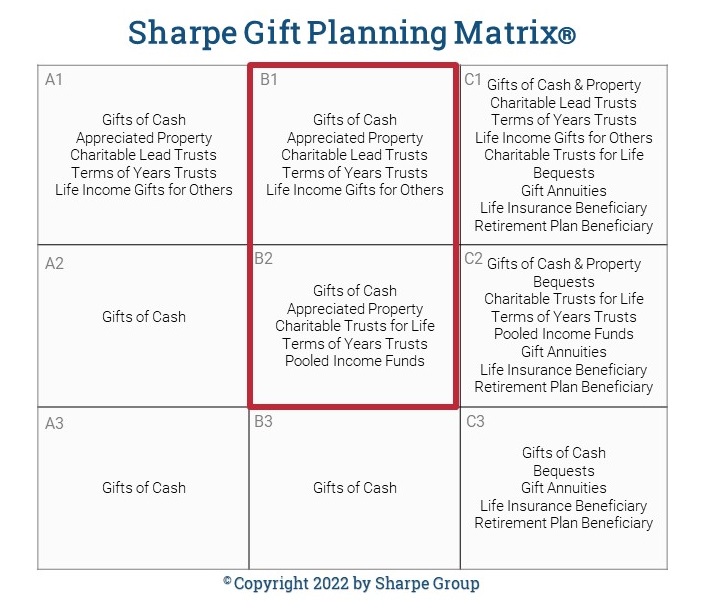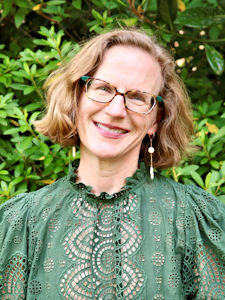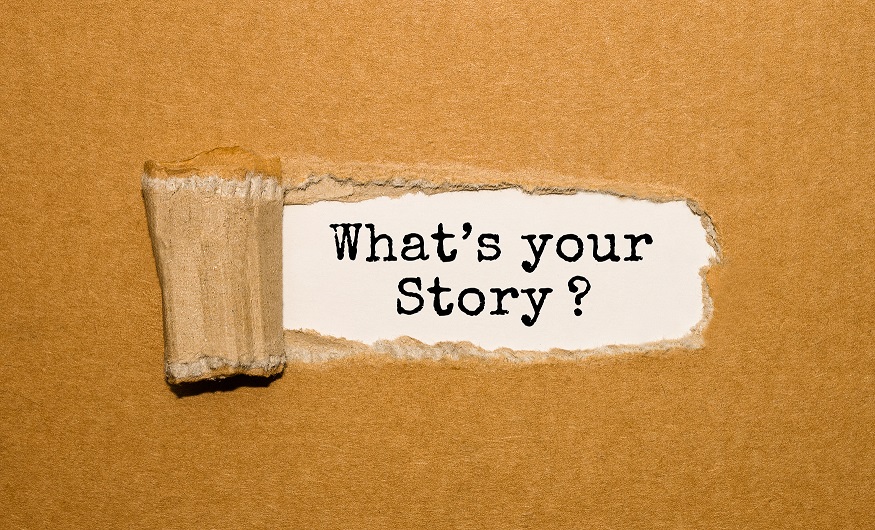I have a friend who likes to say, “I have all I need and most of what I want.” When I hear that, my first thought is “said every planned giving donor ever!”
 As it turns out, my friend is somewhere between a B1 and B2 on the Sharpe Gift Planning Matrix® with proven charitable intent, making him an excellent candidate for a blended gift.
As it turns out, my friend is somewhere between a B1 and B2 on the Sharpe Gift Planning Matrix® with proven charitable intent, making him an excellent candidate for a blended gift.
But I digress … it’s not my job to identify his philanthropic capability; it’s my job to uncover why people like him make gifts (i.e., discovering what they want to accomplish), then write a compelling story and, in doing so, motivate others to follow suit. As I’ve seen over the course of my career, when done right, donor stories can be a powerful inspirational tool and can even lead to additional gifts from donors and their families.
Here, I’m sharing some valuable insights I’ve gained from writing hundreds of donor stories. I hope these tips will inspire you to use donor stories in your own fundraising efforts.
Tip #1: Show and tell. Donor stories can uncover prospects. Let’s face it, we all identify better when we see ourselves in a situation and think, “I can do that too.” (Like the time I considered auditioning for “Survivor” after Tina won Season 2 because we were both athletic and from Tennessee.)
One way to reveal new planned giving donors is to tell the stories of those who have made gifts. Write mostly about the “why” with a little bit of the “how” woven in. To reach the broadest audience, it’s important to make sure you vary your subjects by age, wealth and marital status. Be as diverse as possible and consider your donor base.
Tip #2: Enjoy the process. Donor stories can lead to additional gifts. Many times, I’ve heard that the donors I have written about have expanded their giving as a result of the story. Was it my compelling prose? I’d like to think so but probably not. More than likely it’s good old fundraising 101—also known as stewardship.
The planning and execution of writing a donor story is as important as the finished product. I make sure I do my homework; I provide carefully worded questions (not too many) to the donor ahead of time and let them know what to expect before, during and after the interview. I allow for “getting to know you” time at the beginning of the interview, and I let them know they can have input and make changes to the story before it is shared. My interviews are informal and warm, usually by phone or in person, but I have had a few over Zoom and FaceTime (donors, it seems, are embracing the digital world). I’ve found the more I put them at ease about the experience, the better the outcome.
Tip #3: You’ve got to have heart. Donor stories can serve as a meaningful way to show your gratitude and appreciation. Planned giving donors, as a general rule, see themselves as ordinary people who wish they could do more. By telling their story, you are not only showing others they could make a gift like this, you are also showing your donors how impactful their thoughtfulness is.
 My donor stories aren’t factual biographies with an exhaustive list of accomplishments. Where I can, I use emotion and humor and the donor’s own words. Who influenced them in their lives? What’s a favorite quote? What is the philosophy behind their giving? What are their hopes for the future?
My donor stories aren’t factual biographies with an exhaustive list of accomplishments. Where I can, I use emotion and humor and the donor’s own words. Who influenced them in their lives? What’s a favorite quote? What is the philosophy behind their giving? What are their hopes for the future?
I need the reader to feel like they know and identify with the donor. And I want the donor to truly feel like their story has been told.
If a picture is worth a thousand words, a thousand words (or fewer) about your donors is priceless. ■
 Ashley McHugh, based in Greenville, South Carolina, is the content director for Sharpe Group. She oversees the creation and review of all print and digital content for Sharpe Group clients and is actively involved in developing company marketing and communications materials as a writer and editor.
Ashley McHugh, based in Greenville, South Carolina, is the content director for Sharpe Group. She oversees the creation and review of all print and digital content for Sharpe Group clients and is actively involved in developing company marketing and communications materials as a writer and editor.


